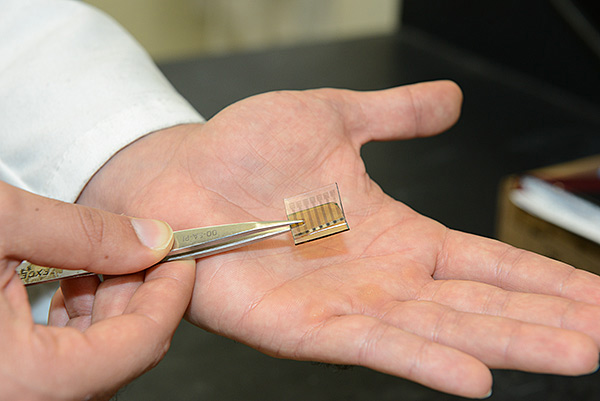Stanford creates all carbon solar cell
 Researchers at Stanford University have created a photovoltaic cell that’s built entirely of carbon structures. The carbon solar cell could be put into solutions and applied as a paint or ink to surfaces, resulting in multiple uses, like building-integrated or flexible photovoltaics. Since the cell is made entirely of carbon structures and avoids the use of costly other materials like gallium, Indium or silver, which is used in some photovoltaics, it could result in much cheaper, and easier to produce, photovoltaics.
Researchers at Stanford University have created a photovoltaic cell that’s built entirely of carbon structures. The carbon solar cell could be put into solutions and applied as a paint or ink to surfaces, resulting in multiple uses, like building-integrated or flexible photovoltaics. Since the cell is made entirely of carbon structures and avoids the use of costly other materials like gallium, Indium or silver, which is used in some photovoltaics, it could result in much cheaper, and easier to produce, photovoltaics.
The cells were developed Stanford Professor of Chemical Engineering at Zhenan Bao and her team, which include co-lead authors, Stanford graduate student Michael Vosgueritchian and postdoctoral researcher Marc Ramuz. They published the results of their project in ACS Nano and have applied for a patent for the whole device.
“The goal of this project was to develop carbon-based materials as transparent electrodes for solar cells. The reason for that is carbon-based materials are very abundant in nature and they have extraordinary light absorption properties,” Boa said. “The electrode materials used in solar cells are becoming more and more expensive. So there’s a great need to find replacement materials so the cost for producing solar cells can be significantly lowered.”
The cell is comprised of a photoactive layer of carbon nanotubes and buckeyballs sandwiched between two electrodes, according to Stanford. Usually the electrodes are made of conductive metals like silver and indium tin oxide, but those materials are continuing to become more expensive, particularly as they’re being used in more and more electronics. In this device conventional electrodes were replaced with graphene nanotubes. Using carbon for the electrodes is unique.
“They have extraordinary conductivity and at the same time they can be dispersed into solution so that we can potentially coat the materials onto surfaces,” Boa said. Such surfaces could include buildings or cars for onsite electric generation. “It’s already possible with the research we have carried out so far to make solar cells with these materials,” she said.
Still the device isn’t ready for primetime anytime soon. It primarily absorbs near-infrared light. As such it’s converting less than 1 percent of light into electricity in lab tests. They’re experimenting with carbon nanostructures that respond to a wider range of light.



